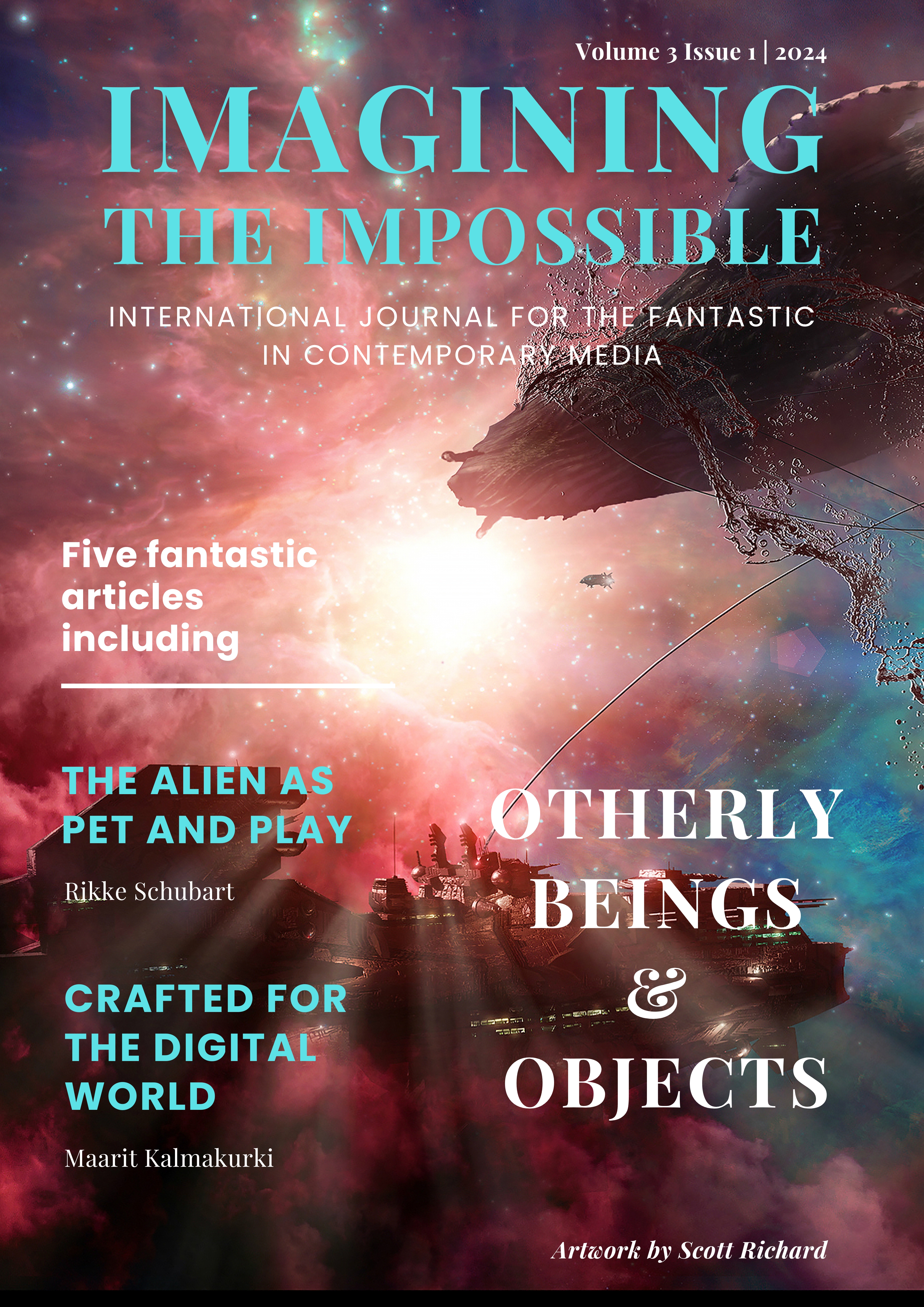New Issue: Volume 3, Issue 1 (2024): Otherly Beings & Objects
We have published a new issue with five articles and a book review.
Læs mere om New Issue: Volume 3, Issue 1 (2024): Otherly Beings & Objects
This international and double blind peer-reviewed journal is dedicated to the interdisciplinary study of the fantastic in today’s entertainment media. The journal is double blind peer-reviewed.
We have published a new issue with five articles and a book review.
Læs mere Læs mere om New Issue: Volume 3, Issue 1 (2024): Otherly Beings & Objects
Editorial
"Alterity, Inside and Out" (Stephen Joyce, Christian Mehrstam, Per Israelson, Rikke Schubart)
Theme Section
1. "Everything and Nothing: The Horror of Meaning in The Cipher" (Alexander Sell, University at Buffalo)
2. "The Fathomless Ocean of Objectivity: An OOO Reading of the Solaris Ocean in Stanislaw Lem's Solaris" (Kwasu Tembo)
3. "'Here, Kitty, Kitty, Kitty': Reflections on Pet and Play in the Alien Franchise" (Rikke Schubart)
4. "Crafted for the Digital World: Digitally Realistic Costumes in CG Feature Films" (Maarit Kalmakurki)
5. "World-Building Through Garments and Accessories in Dungeons and Dragons Illustrations" (Stefan Ekman and Viktoria Holmqvist)
Book Review
The Dragon in the West: from ancient myth to modern legend by Daniel Ogden (Oxford UP, 2021), reviewed by Audrey Isabel Taylor.